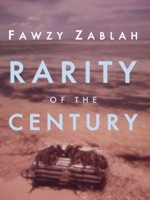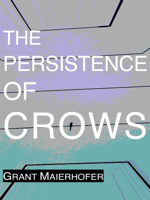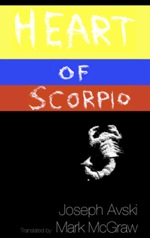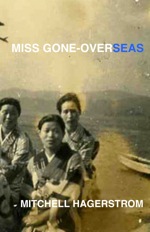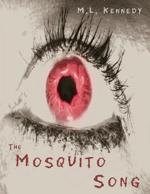Love is all a matter of timing. It’s no good meeting the right person too soon or too late. If I’d lived in another time or place, my story might have had a different ending.
This statement, uttered with profound sadness by the main character of 2046 in a moment of epiphany, sums up the work and themes of Wong Kar-Wai’s films. Throughout his career, the constant themes have always concerned the effects of time – the painful memories it creates, the missed chances, and the simmering regret. In 2046, we see the maturation of these themes, a very palpable visualization evoking the sentiments hinted at in previous films.
Chow, the main character from In the Mood For Love, played by Tony Leung, returns in this film but this time taking a womanizing turn. He sorely misses his love, played by Maggie Cheung from that previous film, and cannot forget her. Every woman that proceeds after is cruelly compared against her; hence, Chow is irrevocably stuck in his past, pining for the woman that has come and gone.
Much of what this film is about is whether he is able to leave his past and move on to the future. Wong structures this inward dilemma by literally creating the impression of memories – memories that evoke a certain nostalgia and anguish over what could have been.
First, it is imperative to note how Wong Kar-Wai’s method is conducive to producing such a film. It has been often noted that he comes to the set without a script and without rehearsing. Imagine the situation that this produces, having the whole crew and all the actors on location, all waiting for the director’s instruction.
In a way, I believe that this is what makes Wong closer to the definition of being an auteur, since if no one knows what is going on, it implies greater effort on the part of the director to participate in every aspect of making the film, from the production design, acting performances, to the cinematography, sound, and post-production processes. Actors are given their lines at the time of shooting, which were written only hours before. To familiarize the actors with the lines and to find the best approach for a scene, multiple takes are shot. Wong often takes an improvisational approach, making decisions and sometimes changing the complete direction of a film on the fly.
The result of this process, aside from the unavoidable ballooning of the budget and constant extension of the shooting schedule, is an excessive amount of footage – different variations of certain scenes to choose from, which aid Wong in determining the path that the film will follow.
Another more relevant result of this process is the lack of a narrative. Because the script, which usually bears the narrative structure for a film, is not present, Wong works with more improvisational and intuitive means, creating fragments of a story and never fully completing the plot. Thus a typical story is never formed, and what coalesces is an amalgamation of different scenes, providing more of a focus on character and mood than story. Much of the plot is elided, and the work of putting the story together is relegated to the audience. These fragments concentrating on characters and mood provide the vehicle on which to build memories.
In previous films, these fragments were present as well, but used more in the traditional linear sense. Sometimes the film would be about the story of two characters, but always, the stories of each vein were presented linearly, such as in Chungking Express. In 2046, however, linearity is eschewed, and the episodic fragments are placed irrespective of continuity. In addition, segments containing fantasy sequences, taking place in the future, are inserted between certain scenes, further disjointing the linear structure and providing a dreamlike feel to the film as a whole.
Of course, the usual repetitive elements that link parallel story lines which appear in all of Wong’s films still make their presence felt in this film, which give it a déjà vu effect. Not only do we get a sense of similar situations between characters through this technique, but also, when a similar shot is shown later in the movie, we are reminded once more of what happened before and forge a connection between the two scenes. On a more imaginative level, the tragic circumstances of the characters are paralleled between the fantasy sequences and the real life sequences, again creating that essential connection that sparks a particular recognition at the end of the movie.
Taken together, with Wong’s trademark usage of voiceovers, the film visceralizes the main character’s memories, taking the audience into his mind, making them live through him and experience his memories in all their randomness and fancy. Through these memories are communicated a poignant sadness and yearning, expressed by a combination of lush visuals and a melancholic soundtrack.
We see this first near the beginning of the film, when Chow asks the Black Widow to come back to Hong Kong with him. First, an intertitle marking the beginning of the segment states the time period, providing the hint that this is something occurring in the past. Like images recalled from a memory, a series of static shots are intercut in the transitions of this episode. There is the shot of the staircase in a dark room, the shot of a dim bulb out in the rain, and that of the winding hallway stairwell. These static shots are inserted whenever the settings change in the scenes of Chow with the Black Widow.
In this sequence, we are immediately thrown into the story, without a primer on who the Black Widow is, how she met Chow, and why Chow is in Singapore. Because of this, all we can gauge from this sequence is the atmosphere set by the dark, rain-drenched scenes, giving off a miserable damp hopelessness. Like the instant flash of remembrance, the sequence itself is relatively short. We find out that Black Widow cannot leave because of her past and are shown a scene in which she plays a game of high-low in order to decide whether she will leave with Chow. Needless to say, it is already a given that she will win and stay in Singapore.
Ending this sequence is a medium tracking shot of the side of Black Widow’s waist as she walks off into the night, using Wong’s oft used step-slow-motion technique, imprinting and elongating the sad image into our minds. There is a voiceover, in past tense, ruminating on the significance of this memory, ending in Chow saying that it was “the last time he saw her”.
Later on in the movie, when a character played by Zhang Ziyi tells Chow that she tried to visit him during Christmas of 1969, Chow is once more brought back to what he did during that time – he had returned to Singapore to look for the Black Widow.
But this in turn retrieves earlier memories of when he was living in Singapore. Once more the audience is taken back to around 1963, back to the sequence that occurred at the beginning of the film. Again, similar elements are repeated – the lobby staircase, the light bulb, the stairwell, evoking in the audience the memory of the initial sequence, putting them in Chow’s point of view.
We learn that the Black Widow’s name is Su Li Zhen, the exact name of Chow’s love, a coincidence that brings forth the theme of fate or destiny, another one of Wong’s favorites. When Chow learns this he is instantly anguished and surprised at this chance meeting – we know that he will transpose his love for his original Su Li Zhen onto this one. We see them become close, but when Chow asks about her past, she lets the cards decide, once again playing the game of high-low, once again beating Chow. The same exact shots are used, paralleling this sequence with the one at the beginning. And we see this parallel as well with the slow-mo tracking shot of Su Li Zhen’s waist as she walks away.




